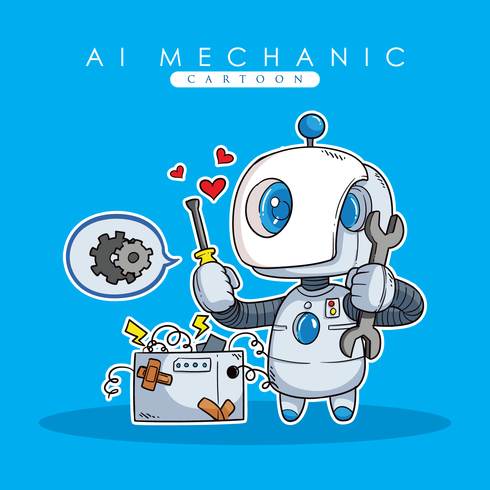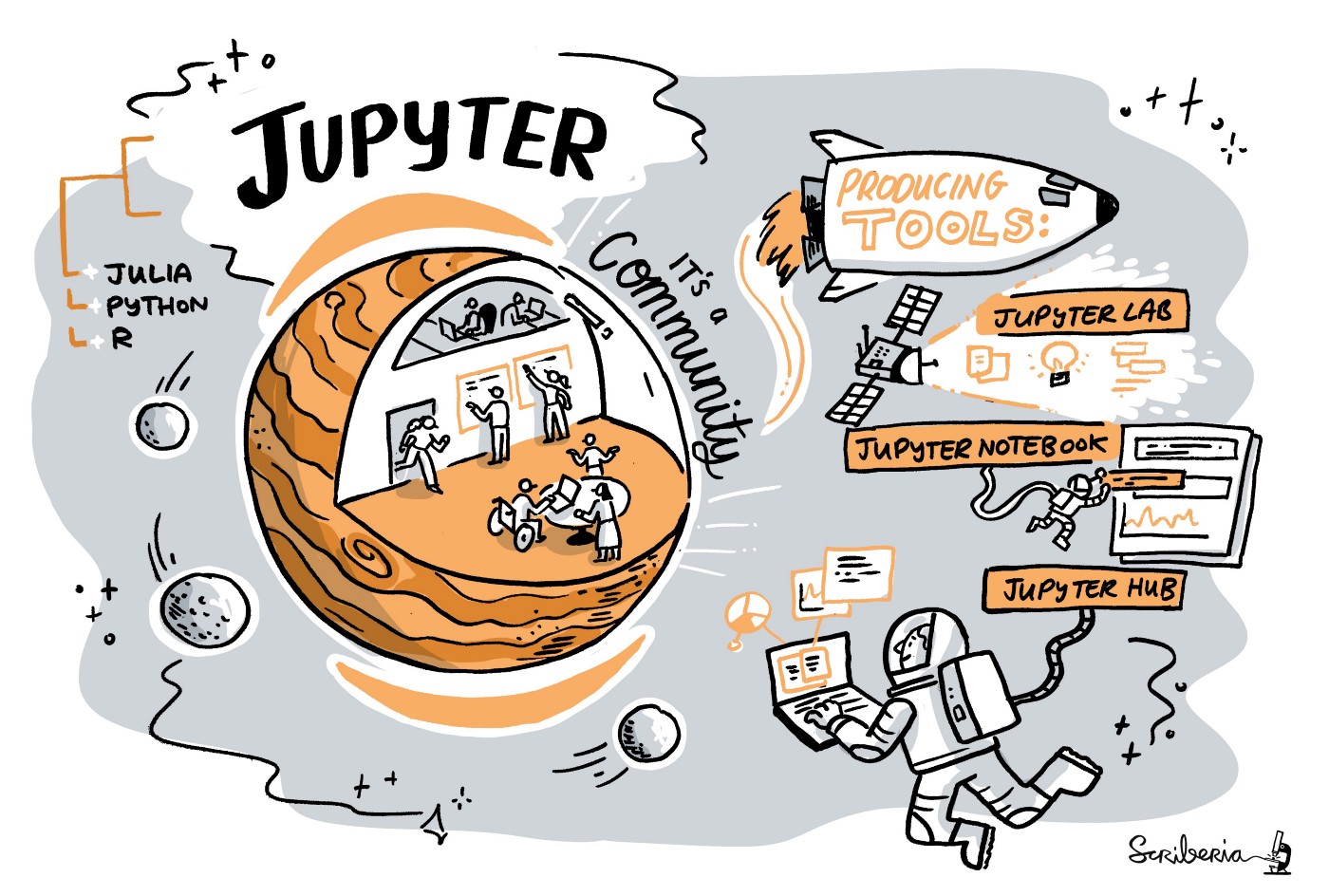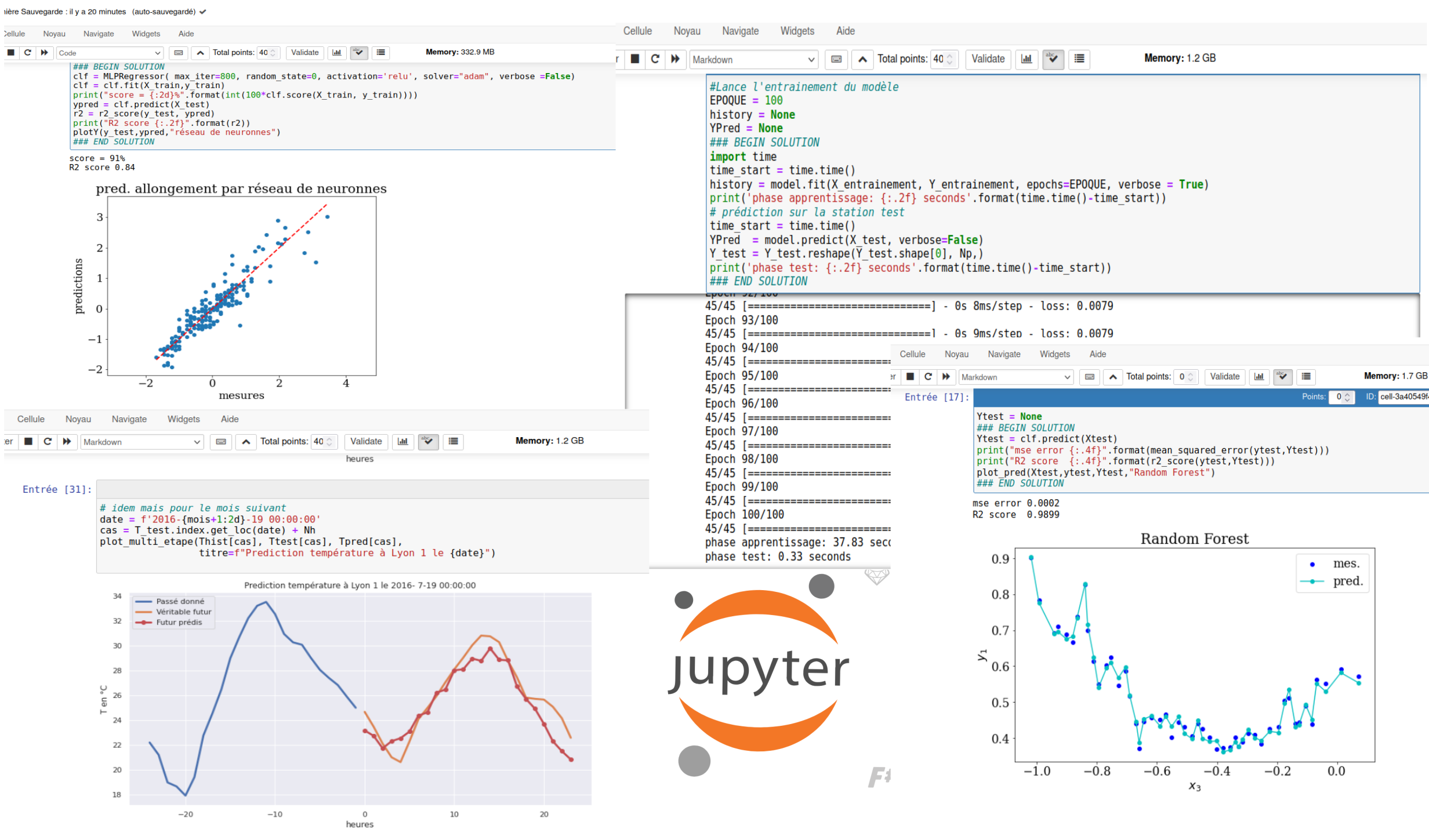3.4. Introduction to AI
Pr Marc BUFFAT, dpt mécanique, univ. Lyon 1

3.4.1. Context of the Formation
3.4.2. Numerical modeling in Mechanical Engineering

3.4.4. Pedagogical approach
Machine learning \(\equiv\) optimization problem
importance of the data (data base)
data cleaning / parameter selection / nondimensionalization
supervised learning for regression
no universal algorithm
Dependence of the choice of hyper-parameters
“learning by doing” approach
material constitution law (experimental database)
meteorological data-base (météo France)
data base derived from simulation (shock tube)
3.4.5. Use of a Jupyter Notebook server infrastructure
virtual machine (VM) : JupyterM2, JupyterGPU1
use of course management server for sharing with students and assessment
available 24h/7d with a web browser (FireFox)
software environment with full feature and well-managed
AI libraries: scikit-learn, keras, tensor-flow,
database libraries: Pandas
libraries for data analysis: numpy, matplotlib, seaborn
tools: markdown, \(\LaTeX\), pandoc
3.4.6. Based on Jupyter and its community
It’s a set of open-source tools for interactive and exploratory computing, and a platform for creating computational narratives to engage our students in their learning process in science.

3.5. Questions ?
Moravec’s Paradox :
“What’s the difference bewteen AI and ML ?” (Will Wilson : nov. 2017)
-It’s AI when you’re raising money,
-it’s ML when you’re trying to hire people.

(C) France Culture 2019: l’intelligence artificielle en question





